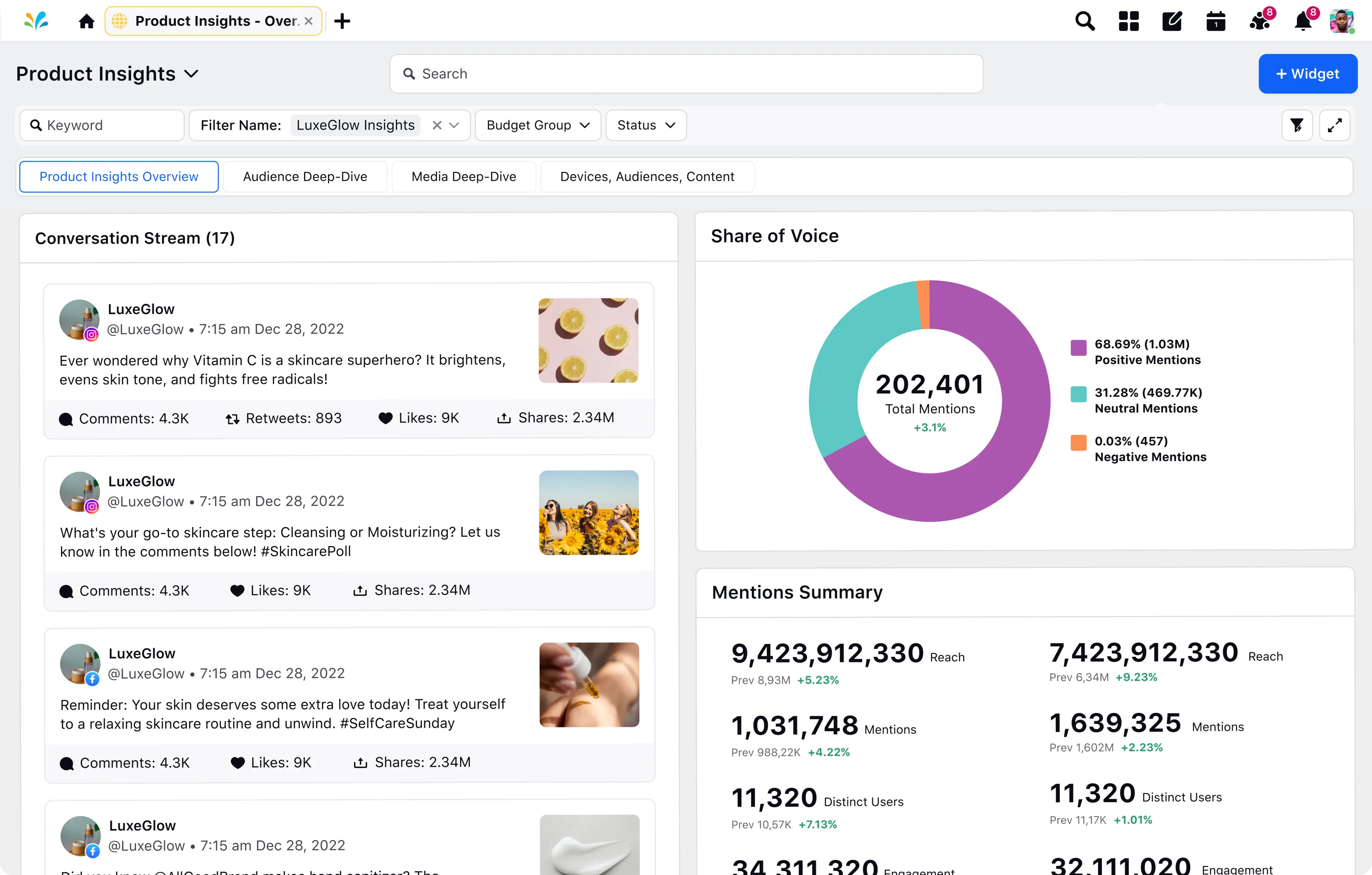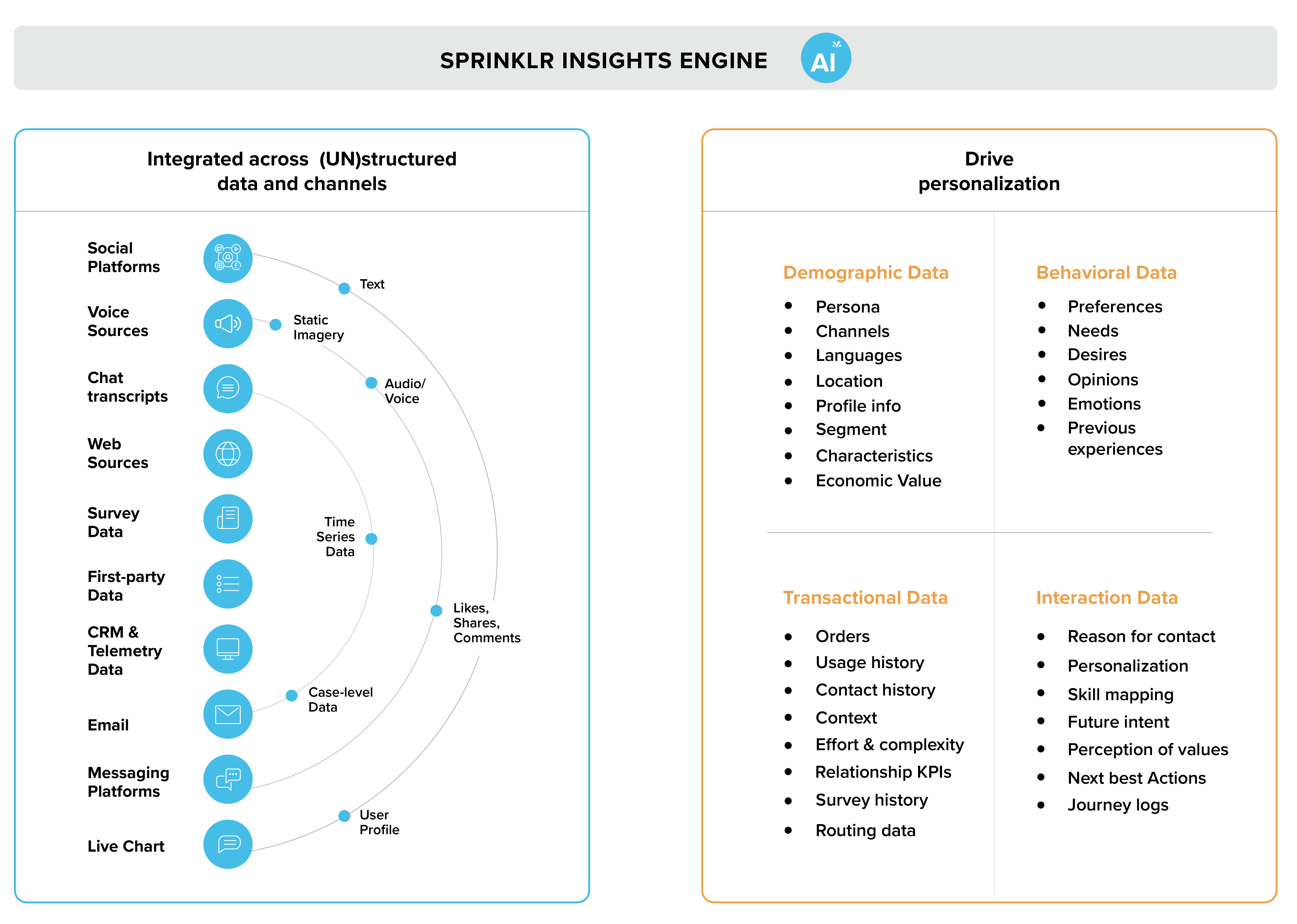- What is conversational AI?
- How conversational AI works
- Conversational AI vs. Generative AI
- 7 benefits of conversational artificial intelligence
- How to deploy conversational AI for your business
- Types of conversational AI technologies
- Chatbot technologies
- Voice technologies
- Real-life examples of conversational AI for industries
What is conversational AI?
Conversational AI is the use of artificial intelligence (AI) and machine learning to create natural, human-like interactions between computers and humans. It revolutionizes customer service by mimicking human-like interactions akin to conversing with a human agent.
Typically used in chatbots and interactive voice response (IVR) systems, it understands queries, gauges intent and sentiment and responds naturally. These mechanisms adhere to core principles for efficient customer conversation handling.
How conversational AI works
Conversational AI for customer service uses natural language processing (NLP) to understand and interpret user inputs, enabling it to engage in human-like conversations through these seven steps: -
1. User input
Customers interact with the AI system using natural language, like sending a text in a chat window or speaking to a voice-enabled device.
2. Intent recognition
AI analyzes the user input to determine the intent behind the message by identifying the specific request or query the customer is making.
3. Contextual understanding
AI considers the context of the conversation, including previous interactions and customer information, to provide more accurate and personalized responses.
4. Response generation
AI generates a response that is relevant to the user's query based on the intent and context. This response can be in the form of text, voice or a combination of both.
5. Dialog management
AI keeps track of the context to manage the flow of the conversation and ensure the interaction remains coherent and relevant.
6. Backend integration
The AI may need to access information from backend systems, such as customer databases or product catalogs, to provide accurate responses.
7. Feedback loop
Include a feedback mechanism to allow conversational AI systems to learn and improve over time based on user interactions.
Learn more: Eight Reasons Why Using Conversational AI Chatbots Is a Must
Conversational AI vs. Generative AI
As their name suggests, conversational AI makes conversations with customers, and generative AI generates content for them.
Let’s understand their functionalities, inputs, outputs, applications and examples of Conversational AI and Generative AI, highlighting their impact on various industries and use cases. Whether it's a chatbot talking to a customer or AI generating an image, these technologies are revolutionizing the way we engage with technology and unleash creativity.
Aspect | Conversational AI | Generative AI |
Functionality | Interacts with users based on predefined rules | Creates new content without specific instructions |
Input | Responds to user queries | Generates content from scratch |
Output | Provides responses within predefined parameters | Creates original content based on input |
Application | Used in chatbots, virtual agents, etc. | Used in content creation, storytelling, etc. |
Usage | Enhances customer service, improves efficiency | Aids in creative processes, generates new ideas |
Examples | Chatbots providing customer support | AI writing a story or generating poetry |
For more detailed information, refer to the article – Conversational AI vs. Generative AI: Core Differences.
7 benefits of conversational artificial intelligence
Conversational AI offers a plethora of benefits and enhances efficiency, optimizes costs and improves overall customer experience. Below are the seven key benefits of conversational intelligence.
1. It provides seamless and personalized interactions, improving customer satisfaction and customer retention by analyzing past conversations and understanding current intent.

2. It automates repetitive tasks through chatbots and virtual assistants, allowing customer service teams to focus on critical issues and make faster decisions.

3. It saves money by automating routine tasks, reducing errors and increasing operational efficiency as it requires less human labor.

4. It monitors conversations leveraging natural language processing (NLP) to extract customer behavior data, aiding in improving sales and marketing approaches.

5. It is available 24/7, offering convenient interaction and personalized solutions to customers.
6. It uses machine learning to create personalized chat experiences, resolving queries effectively and efficiently.
7. It can handle high-volume interactions leveraging automation, ensuring every customer receives prompt attention without compromising on quality.

How to deploy conversational AI for your business
Deploying conversational AI for your business requires careful planning and strategic implementation. Below is a step-by-step guide outlining key considerations and best practices to help you deploy conversational AI successfully.
Step 1: Plan your strategy
Start by defining your end goals and how conversational AI can serve your business objectives. Identify specific customer issues and determine how conversational AI can resolve them. Establish key performance indicators (KPIs) to track progress.
Step 2: Choose your approach
Decide whether to build your conversational AI in-house, use third-party conversational platforms or opt for a conversational AI vendor.
Step 3: Develop high-quality content
Leverage existing content and data sets, such as customer support materials and FAQs. Refine this content for customer interaction and engagement. Conduct conversation roleplay sessions to create scripts and detect unexpected conversation possibilities.
Step 4: Engage key stakeholders
Involve security, compliance and legal teams early to ensure alignment and approval. Obtain content approval from legal and compliance teams to prevent deployment delays.
Step 5: Choose deployment channels
Analyze your AI use case to select the appropriate channels, such as voice, advertising, social media, websites or in-store displays. Ensure your conversational AI enhances customer outcomes.
Step 6: Select deployment infrastructure
Decide whether to deploy on-premises, in the cloud, or using a hybrid approach. Each option has its advantages and disadvantages, so choose the one that best fits your needs.
Step 7: Implement a systematic deployment
Define specifications, installation requirements and KPIs with your team and provider. Internally launch the AI system for user and security testing before customer release. Continuously monitor customer behavior for feedback and improvement opportunities.
Types of conversational AI technologies
Two major categories of conversational AI technologies are currently in use — chatbots and voice bots. In this section, we’ll discuss these two types and the popular sub-categories that are in use now.
Chatbot technologies
Chatbots primarily provide automated text capabilities through conversational AI on messaging platforms such as Facebook Messenger, WhatsApp and Slack. The most popular types of chatbots in use are as follows:
AI chatbot: AI chatbots are powered by machine learning algorithms and can learn from customer interactions to improve their responses over time. They use NLP to understand user messages and respond appropriately and can handle complex queries and tasks.
Rule-based chatbot: Rule-based chatbots are programmed to respond to specific keywords or phrases. They use a set of predetermined rules to provide responses to customer queries. Rule-based chatbots are less sophisticated than AI chatbots but can still provide basic support to customers.
Hybrid chatbot: Hybrid chatbots combine the features of AI and rule-based chatbots. They use a combination of machine learning algorithms and predetermined rules to provide responses to customer queries. Hybrid chatbots are more advanced than rule-based chatbots but less sophisticated than AI chatbots.
Voice technologies
Voice technology in conversational AI employs voice recognition and synthesis to interact with customers. They are typically used through devices such as smart speakers or virtual assistants. Two major types of voice technologies that are in use now are as follows:
Voice bots: Voice bots use voice recognition and synthesis to communicate with customers and have extensive conversations. They are typically used through devices such as smart speakers or virtual assistants. In the context of customer care, voice bots are more like rule-based chatbots that have a predetermined set of voice prompts and responses and might not be very useful if the customer requests for info outside of this scope.
Interactive Voice Assistants (IVAs): IVAs are voice-enabled virtual assistants that use natural language processing and machine learning to understand customer queries and provide relevant responses. In customer care, IVAs can be used to let the system handle extensive customer conversations at a stretch without breaking a sweat and without any agent intervention.
Real-life examples of conversational AI for industries
Many industries are leveraging different types of conversational AI to enhance customer engagement, streamline operations and improve overall efficiency. Here are some real-life examples:
1. Retail
Macy’s helped customers find products, tracked orders, and gave personalized recommendations by leveraging a chatbot on their website.
2. Healthcare
Babylon Health provided medical advice, symptom checking and appointment booking with an AI-powered chatbot, reducing the burden of healthcare services.
3. Education
Georgia State University navigated students through enrollment, helped them find resources and got answers to common queries via a chatbot.
4. Telecommunication
The Middle Eastern telecommunications company improved customer engagement and operational efficiency by partnering with Sprinklr. They wanted to reduce their customer service SLAs and customer churn.
Solution:
Through Sprinklr Service, the company streamlined its customer service processes. Sprinklr's Automated Routing software swiftly directs customer messages, improving response times, while Agent Assist boosts productivity by suggesting responses and reducing SLA times for customer issues.
The result:
Today, the telecom company supports a staggering 30M subscribers in the Middle East. Since 2015 with Sprinklr, the company has achieved an incredible 4-minute SLA for public comments and a 10-minute SLA for private messages, reduced churn and increased retention through AI-driven engagement.
Read the full case study here!
Do you want to reduce churn, boost retention and gain real-time insights as well?
Frequently Asked Questions
Thank you for contacting us.
A Sprinklr representative will be in touch with you shortly.
Contact us today, and we'll create a customized proposal that addresses your unique business needs.
Request a Demo
Welcome Back,
No need to fill out any forms — you're all set.


